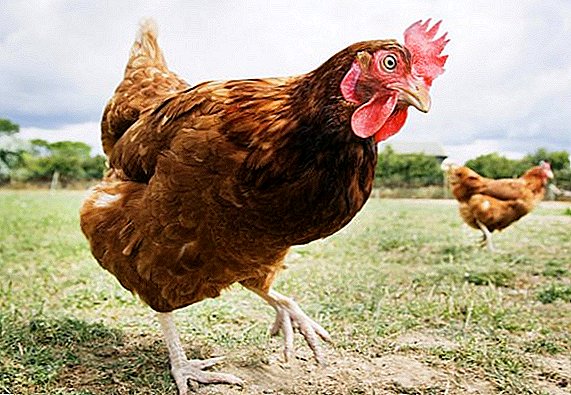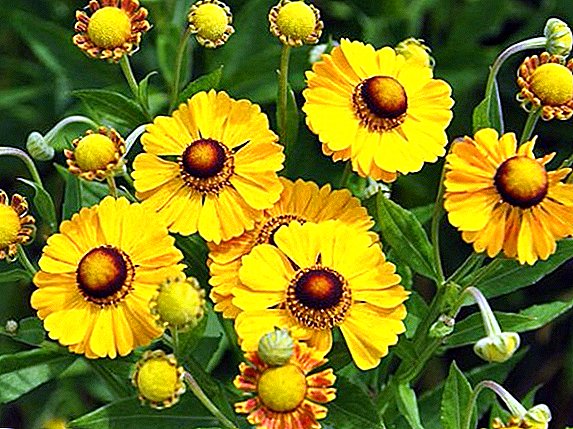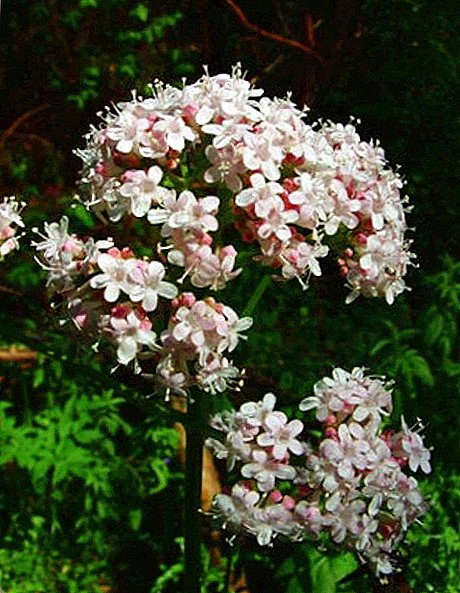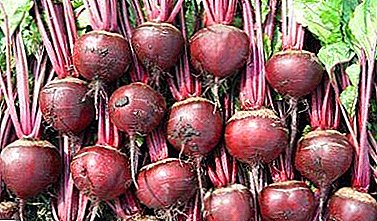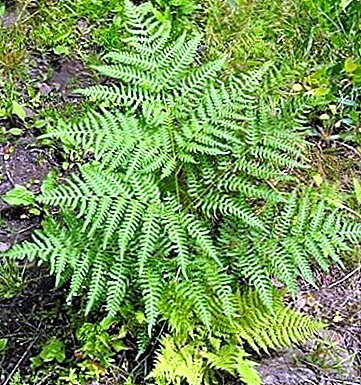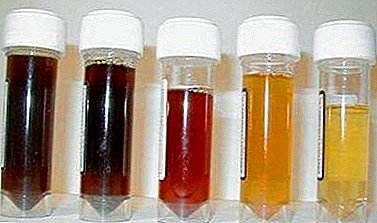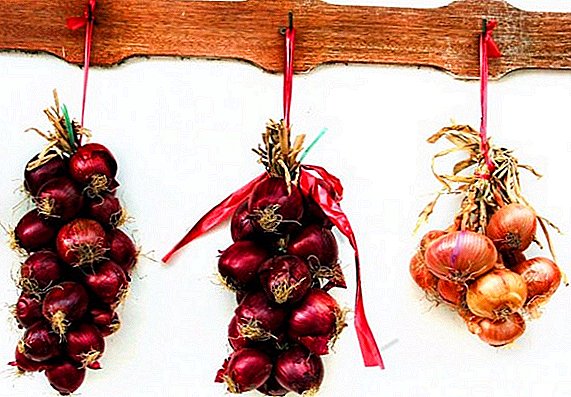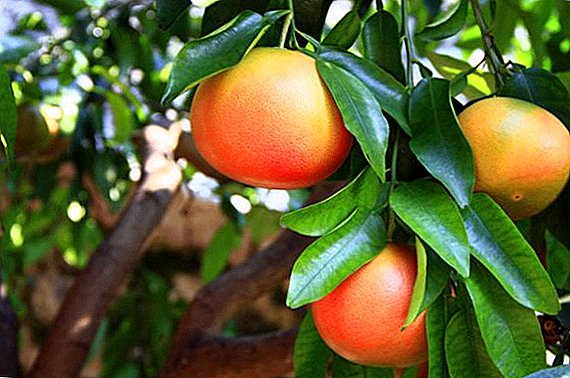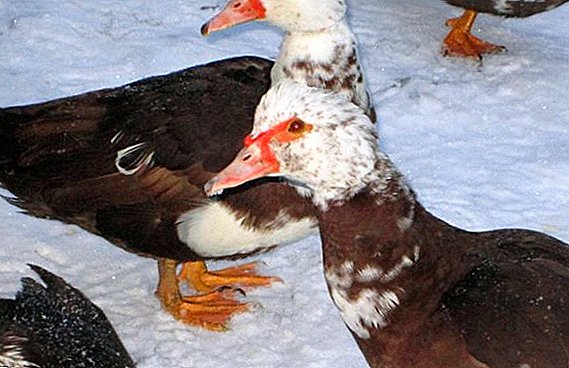 Breeding hawks, or musk ducks, is one of the most popular areas of poultry farming. The homeland of these large ducks is South America, and this affects the nature of their maintenance during the winter period.
Breeding hawks, or musk ducks, is one of the most popular areas of poultry farming. The homeland of these large ducks is South America, and this affects the nature of their maintenance during the winter period.
Comfortable temperature indoutok content in the winter in the barn
The native climate for Indo-Utki is equatorial tropics with a high average annual temperature of + 25 ... +28 ° С and the absence of a pronounced change in the seasons. Therefore, the equipment of the house for the winter for musk ducks has its own characteristics.  Mandatory requirements for winter maintenance:
Mandatory requirements for winter maintenance:
- The temperature in the house should not be below +18 ° C. Remember that in the bird's native Brazil, in the coldest month of the year, July, the thermometer does not fall below +23 ° C. Therefore, in the house you need to mount the heating system.
- Indoors should not be drafts.
- To heat from the house did not go away, it must be warmed.
- Since the ducks will be deprived of the opportunity to walk in the winter, the house should be quite spacious and equipped with artificial lighting.
- Indo-sticks do not need a reservoir. For the first time, musk ducks are described by biologist Carl Linnaeus as tree ducks. They love to nest in trees in wet places, but they do not like to swim. Therefore, it will be enough for them to have ordinary drinkers with heated water.
Did you know? Selection selection of the breed signs of musk ducks was not carried out. For convenience, duck breeds have been considered to be of different color - white, black, blue, red, etc.
How to prepare a house for winter
An ideal duckling should:
- to be constructed so that other structures and trees cover it from the north wind;
- have windows facing south;
- have a warm floor.
 To prepare for the winter already existing house, start with his insulation. Then take care of heating systems, lighting, water heating, as well as equipping the Utyatnik drinking troughs, nests and other equipment.
To prepare for the winter already existing house, start with his insulation. Then take care of heating systems, lighting, water heating, as well as equipping the Utyatnik drinking troughs, nests and other equipment.
We advise you to read about the arrangement of premises for the maintenance of indoutok.
Thermal insulation
Warming up the duckling should include: floor, wall, roof insulation, window and door preparation. Any unheated part of the room will contribute to the outflow of heat from the room. Insulators can be different: plate, roll, bulk and liquid.
For wall insulation suitable rolled or plate materials:
- Granular Foam - This is a material with low cost. The material is light, retains heat well. Its main disadvantage is that it is vulnerable to rodents.
- Advanced version of foam - penoplex. The material is perfectly mounted, it is not eaten by pests, it retains heat well, but is exposed to moisture.
- The most popular insulation is mineral wool. Material with high thermal insulation properties, sound absorbing, moisture resistant, vapor-proof, not exposed to rodents. Due to the flexibility of mineral wool, it is possible to insulate absolutely any surface without leaving gaps in hard-to-reach places.
Insulation is nailed to the walls with slats, and then the walls are additionally upholstered with OSB-plates or any other slab material.  OSB-plate Oriented strand board (OSB-plate) consists of wood chips, glued with special resins. Used to cover the insulation layer.
OSB-plate Oriented strand board (OSB-plate) consists of wood chips, glued with special resins. Used to cover the insulation layer.
For the floor, it is desirable to use a system consisting of a subfloor, insulation and finishing floor. So that such a floor does not pull up the soil moisture, the construction is additionally completed with steam and waterproofing. Such a multi-layered floor is needed so that the duck paws do not freeze.
Find out what is useful for indouin meat and when to cut indoutok for meat.
Litter
Standard litter bed consists of:
- sawdust;
- straw;
- hay from raznotravya;
- sunflower husks;
- sand.
The task of the litter in the winter time is to replace or supplement limited walking. The warmth for duck paws will be provided by the system of the warmed floor, and the litter will enable the ducks to occupy themselves with something: to dig and search for something, to process feathers from parasites, etc.  The initial volume of the winter litter is 20-30 cm. Once every 3 days it should be poured and mixed with forks. This is done to improve aerobic processes and prevent the litter from sticking to the cake.
The initial volume of the winter litter is 20-30 cm. Once every 3 days it should be poured and mixed with forks. This is done to improve aerobic processes and prevent the litter from sticking to the cake.
Modern technologies in the poultry industry are not standing still, and in recent years special fermentation litter has become increasingly popular. The material of the litter looks like sand. It is scattered on a usual laying with a layer up to 5 cm and mixed.
Important! The main active component of the fermentation litter is microorganisms. They process the manure, eliminate the ammonia that is released from the manure, and produce heat.
Benefits received:
- no smell of manure and improved microclimatic indicators of air;
- manure processing;
- on the surface of the working litter, the temperature reaches +25 ° С, and inside the litter - +50 ° С.
 Technology laying fermentation litter:
Technology laying fermentation litter:
- at positive air temperatures (September-October) a layer of sawdust 15 cm thick is poured on the dry floor;
- fermentation bedding is piled on them;
- to create a working environment, it is necessary to water the litter from the watering can and mix with forks;
- After 5 days, check the temperature of the layer: if it is normal, you can run birds on it.
The bird placement rate is 9 adult ducks per 1 square meter. The poultry placement standards are specified by the manufacturer on the packaging of the litter material.
Learn more about the breeding and maintenance of musk ducks: incubation of ducklings, the differences between the duck and the female duke, the treatment of diseases of the indouka.
Features care for litter:
- bacteria die at minus temperatures, so the room must be heated;
- insufficient or excessive number of ducks per 1 square. m leads to a change in the amount of manure, which can also cause the death of beneficial bacteria;
- if the litter is dry, it should be moistened with watering can;
- The paws of the ducks tamp the litter, therefore, it needs to be loosened once every 3 days.

What else should take care in the winter
It should be borne in mind that water in a cold winter may freeze or cool to temperatures unacceptable for indoutok. It is therefore advisable to establish heated nipple drinker. To organize such a system, a heating cable is used for a heated water supply system. It is advisable to pack the heated nipple drinker additionally in thermal insulation in order to avoid the costs of excess heat.
Artificial lighting installed from several electric lamps of 50 watts. Additional lighting will extend the daylight for birds to ensure egg production.
Heating may consist of a heater, infrared heater, stove-stove or other heating devices. With any heating system in the house should take care that the ducks are not burned when trying to get closer to the heat source.
Did you know? The largest modern variety of indo-jokes is the cross-blue favorite, derived by Blagovarsky poultry factory (Russia). Drake weight can reach 7.5 kg.
We prepare nests
Indoor nests can be located on the floor of the house and at a height of 20 cm from the floor. If the nests were located on the floor, then before the onset of winter move them a little higher, so that there is an air cushion between them and the floor. Insulate the nests with an additional portion of straw from the inside.  Since ducks love to fly and nest in trees in the wild, a roost system is needed in the house.
Since ducks love to fly and nest in trees in the wild, a roost system is needed in the house.
Read also about the benefits of Indo-Egg eggs and about when Indoorts begin to sweep and why they do not rush.
Feeders and drinkers
It is advisable to equip a walking yard and a duckling heated drinkers - such as described above. If this is not possible, it is necessary to control that the water in the drinkers does not freeze. To create 1 drinker you will need a polypropylene pipe with a depth of at least 20 cm and with a width of drinking holes of no more than 20 cm.
Feeders should be separate for different types of food - mash and dry food. One feeder is designed for 6 ducks. Its length should be at least 1 m, height - 10-12 cm. 
Keeping the house clean
Regular maintenance of the duckling includes:
- Adding bedding 1 time in 3 days and cleaning from manure. When using a fermentation litter, its maintenance will be required no more than once every 2-3 months according to the instructions on the manufacturer's instructions.
- It is advisable to air the room regularly so that there is clean air in the house.
The distance between feeders and drinkers should be at least 1.8 m. This is due to the fact that ducks eat and drink very carelessly, which can lead to dirt and confusion.
Important! Indo-outs can be placed in the same room with other animals, but for birds it is necessary to fence off their territory with a net or wooden partition.
What temperature is acceptable for walking
The organization of a walking yard for ducks is very important. Ducks can not walk on cold ground and snow, as they freeze their paws. Therefore, winter walking yard reminds greenhouse or greenhouse. It must be protected from wind, rain and snow. It is desirable to have it on the south side of the house. On the ground of the courtyard should be a layer of litter at least 40 cm thick. If the air temperature falls below -5 ° C, then it is impossible to let out the indoutok into the courtyard because of the risk of freezing paws. 
How to feed the Indo-duck in winter
Changing the winter diet is associated with a lack of green fodder and sunny days. Indeliut spending a lot of energy to maintain body temperature. To compensate for the loss of lack of greenery, it is desirable to increase the content of grain feed by 30%, as well as to enrich the diet with various food additives. Winter diet - 3-4 times a day. The rate of feed - up to 350-800 g per day, the rate of water - up to 500 ml per day.
We recommend reading about the features of feeding musk ducks.
Approximate diet
Mandatory grain ration contains:
- wheat - 70%;
- barley - 30%.
Mass fraction of grain per day ranges from 200 to 400 g. The menu can include other types of grain, replacing them with up to 30% of the basic diet. Also, to increase the vitamin component of the feed, germinated grain is added to indute residues.
The vegetable content is at least 50% of the diet (200-400 g) and consists of raw beets, potatoes, and pumpkin.  Additional additives:
Additional additives:
- bran - 15 g;
- meat and bone meal - 10 g;
- shells, chalk - 8 g;
- salt - 1 g
Important! Poultry farmers do not recommend feeding the indoutok with sunflower seeds. Due to the high content of oils, birds begin to quickly grow fat.
Vitamin and mineral supplements
You can also vitaminize the ration of birds with grass or hay flour. With natural drying, herbal raw materials differ little in nutritional value from green mass. Flour is produced by grinding dried hay. This is an excellent protein-vitamin concentrate with good digestibility and digestibility. The daily ration of flour - 30-50 g. It is added to wet mash.
Dried grass contains:
- vitamin A (beta carotene);
- vitamins B2, E, K;
- calcium, iron, potassium and other minerals.
Video: winter musk ducks
Winter content musk ducks: reviews


The maintenance of indouk in the winter can be quite troublesome, but when organizing comfortable conditions for the birds, you may well be happy with the result. These birds eat much less than ordinary ducks, and besides, their meat is considered dietary.


